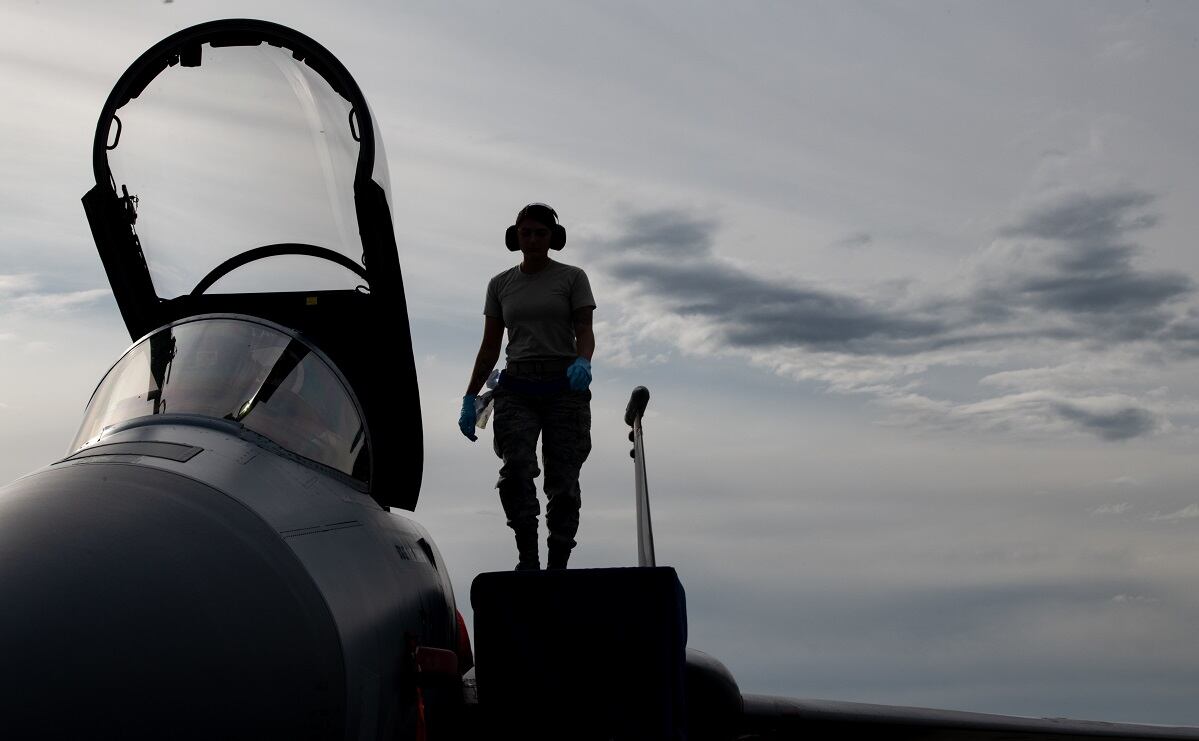The Defense Department wants to sink more than $5 billion into personnel next year, with a 2.7-percent pay raise and an extra $200 million in family support programs, according to the fiscal year 2022 budget request released Friday.
The proposal would also drop the military’s overall end strength by about 5,400, at a time of historically high retention, according to budget documents.
RELATED

The Army, projected to stand at 1,012,300 soldiers on Oct. 1, will come down to 1,010,500. Included in that are 485,000 active-duty soldiers, roughly the same level the Army has held for the past year, and 900 fewer than what the budget called for in FY21.
The freeze on force growth is a reversal of a plan launched in 2017, when the Army announced a goal to reach 500,000 active-duty by the end of 2022.
“I can’t tell you what the Army end strength will be. I know it has to be above 500,000. I know it has to be above 500,000 in the regular Army – and I’ve always said associated growth in the Guard and Reserve,” then-Army Secretary Mark Esper, who went on to be defense secretary, told Army Times in 2019. “But our war games could come out and tell us – in two years, or a year and a half – that we really need 504,000. Or it could come out and tell us that we need 540,000.”
Despite the drop in the force, the Army’s chief of staff has gone on record saying that his force is too small.
“This is the same size Army that we had on 9/11, and when I take a look at what the requirements are, when I take a look at what historically we needed, and now that we’re in a time of great power competition, I’m very, very concerned about the size of the Army,” Gen. James McConville said in April.
Half of the other services are taking a hit as well. The Navy is projected to go down from 407,329 to 404,800, with 343,450 active. The Marine Corps, from 217,443 to 215,300, with 178,500 active, part of a downward trend in recent years.
The Air Force and Space Force, on the other hand, are both growing. According to Air Force numbers, the service is adding about 1,400 airmen this year, bringing its total to 506,900, with 328,300 on active duty.
Those services’ end strength numbers reflect “the divestment of outdated platforms across multiple services and components (e.g. older F-16s, Landing Ship Docks, tank companies and Helicopter Sea Combat Squadrons, etc.),” according to the budget proposal.
The Space Force is set to add just over 2,000 new guardians to reach 8,400. That growth will come from a mix of recruitment and inter-service transfers, as the new branch began recruiting troops from Army and Navy space specialties this year.
The budget also includes funding for a host of work force and family issues, including: 2,000 more childcare spaces, $200 million for DoD schools, and funding for sexual assault prevention and response, suicide prevention and diversity and inclusion efforts, a senior defense official told reporters on Thursday.
“These programs are critical to maintaining and enhancing readiness,” the official said.
This story has been updated to correct a discrepancy between Air Force and Defense Department end strength figures.
Meghann Myers is the Pentagon bureau chief at Military Times. She covers operations, policy, personnel, leadership and other issues affecting service members.





